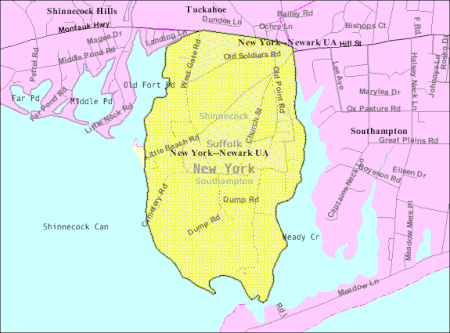Shinnecock Reservation

Shinnecock Reservation is a Native American reservation for members of the Shinnecock Indian Nation in the town of Southampton in Suffolk County, New York, United States. It is the furthermost east of the two Native American reservations in Suffolk County; the other being Poospatuck Reservation in the town of Brookhaven. It lies on the east side of Shinnecock Bay on southeastern Long Island, near Tuckahoe, Shinnecock Hills, and the village of Southampton. The population was 819 as of the 2020 census. Roughly that many tribal members additionally live off the reservation. In 2010, the Nation received federal recognition as a tribe, a status which it pursued for 32 years. This will enable the tribe to move forward with its plans for a casino; it has already been discussing this with the state and local governments. Opposition to additional casinos in the New York market is based in part on dilution of demand: both the Foxwoods Casino in Connecticut and those in Atlantic City, New Jersey attract thousands of New Yorkers, and Aqueduct Racetrack opened a casino in 2011, and its proximity to the wealthy and powerful located in the neighboring Hamptons communities of the South Fork.
Excerpt from the Wikipedia article Shinnecock Reservation (License: CC BY-SA 3.0, Authors, Images).Shinnecock Reservation
Church Street,
Geographical coordinates (GPS) Address Nearby Places Show on map
Geographical coordinates (GPS)
| Latitude | Longitude |
|---|---|
| N 40.874444444444 ° | E -72.431666666667 ° |
Address
Church Street
11969
New York, United States
Open on Google Maps


